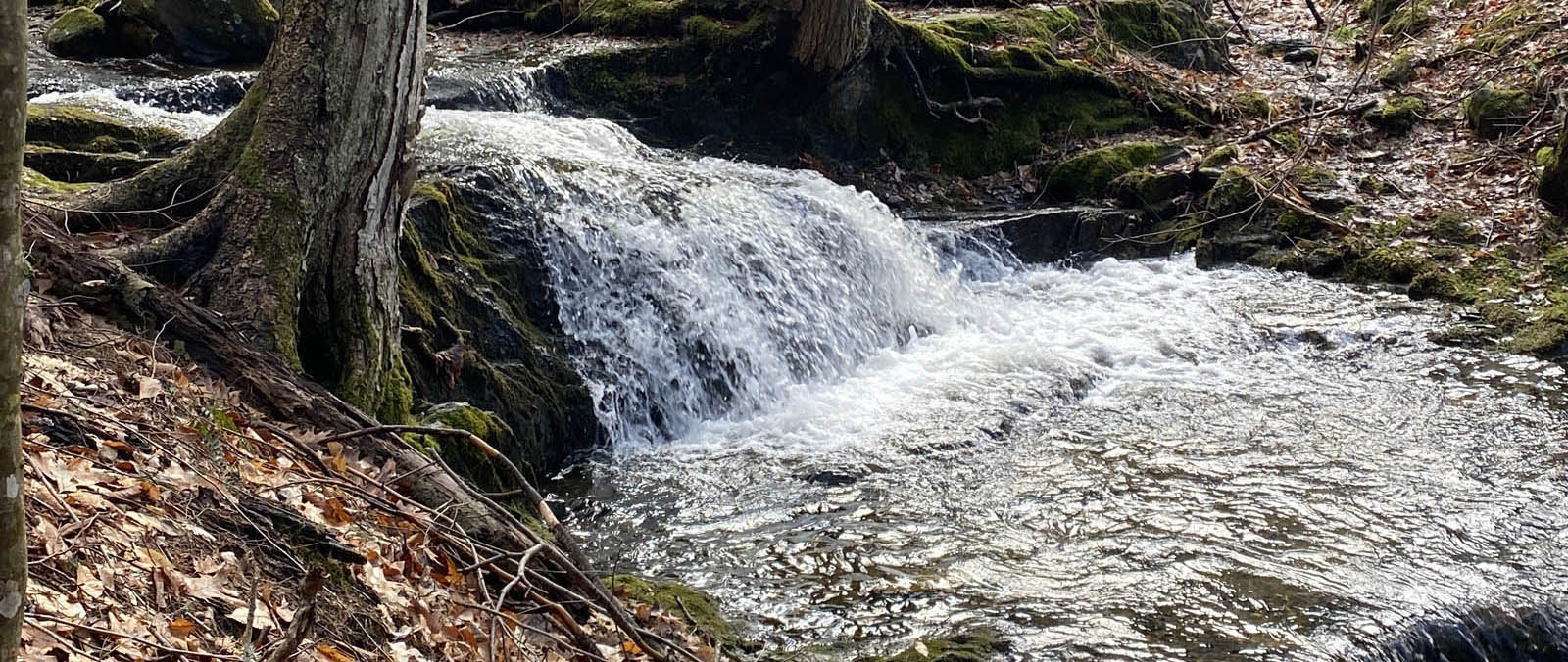
VFF Links Habitats with New Land Purchase
In March, 2022, Vermont Family Forests purchased 95.6 acres of land in Bristol and Lincoln. The conservation and education potential of this parcel is very exciting to contemplate.

What’s so special about it? This land abuts the wildest portion of VFF’s Anderson lands—the 470-acre Guthrie-Bancroft parcel. It has been identified in Vermont Conservation Design as part of a highest priority interior forest block. It adds another link in a wildlife habitat corridor between Hogback Mountain and the Green Mountains. Though it has steep access, it’s a piece of land that could have been subdivided and developed, with impacts on water, wildlife, and carbon storage.
It also abuts a 30-acre piece of land that VFF purchased in 2020. We called that parcel Cold Brook, because of the beautiful stream that runs along its southern boundary. We’re extending that same name to this new parcel, which includes and safeguards even more of that stream.
Take a look at the map, and you’ll see how this new land fits like a puzzle piece in the larger network of conserved lands.

On VFF’s neighboring Guthrie-Bancroft parcel, the Colby Hill Ecological Project (CHEP)—which Lester and Monique Anderson initiated in 1998—has been collecting ecological data for 24 years. The Andersons placed forever-wild conservation easements on their lands so that the land would continue to provide, in perpetuity, what Aldo Leopold described as a “base datum of normality, a picture of how a healthy ecosystem maintains itself.” By providing this base datum, Leopold said, wilderness offers “a laboratory for the study of land-health.”
Lester’s vision for CHEP was that the research on the Anderson lands would in some way inform conservation practices on actively managed forests. We see this new land as a key place for that to happen.
There’s a buzz these days in the forestry community about the notion of putting industrial forestry to work in service of advancing old growth characteristics—in other words, to speed up the process of forest rewilding and cultivate ecological benefits more quickly.
We’d like to work toward that same end—actively encouraging forest rewilding—though non-industrial means. We’d like to practice ecological silviculture the VFF way, with the VFF Organic Forest Conservation Checklist guiding the process—with access trails that are lines of grace; with appropriately scaled, light-on-the-land log forwarders rather than feller bunchers and grapple skidders; with uneven-aged management by area regulation rather than shelterwood cuts and clearcuts; with abundant biomass left onsite to restore the land and water quality. Throughout the process, we’ll monitor and document what we do and what we discover.
John Dewey said, “Without application, principles and ideals have no bearing and no test.” We see this new land as a place where we can apply and demonstrate VFF principles and ideals. Just as the University of Vermont has an extension service that integrates and applies their latest research to land use practices, we’ll have our own CHEP Extension, where we walk the talk of forest rewilding.
There’s much we can do on this land to help improve water quality, carbon sequestration and storage, wildlife habitat, and flood and drought resiliency. Our new conservation forester, Ralph Tursini, has conducted a forest inventory, and we’ll use that data to create a forest conservation plan for the Current Use program. We look forward to starting to put that plan into action this spring. Meanwhile, we’re basking in the honor and pleasure of holding this new piece of land. Welcome, Cold Brook!





